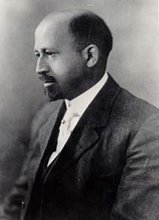In 1971, Lewis F. Powell, then a corporate lawyer and member of the boards of 11 corporations, wrote a memo to his friend Eugene Sydnor, Jr., the Director of the U.S. Chamber of Commerce. The memorandum was dated August 23, 1971, two months prior to Powell's nomination by President Nixon to the U.S. Supreme Court.
The Powell Memo did not become available to the public until long after his confirmation to the Court. It was leaked to Jack Anderson, a liberal syndicated columnist, who stirred interest in the document when he cited it as reason to doubt Powell's legal objectivity. Anderson cautioned that Powell "might use his position on the Supreme Court to put his ideas into practice...in behalf of business interests."
Though Powell's memo was not the sole influence, the Chamber and corporate activists took his advice to heart and began building a powerful array of institutions designed to shift public attitudes and beliefs over the course of years and decades. The memo influenced or inspired the creation of the Heritage Foundation, the Manhattan Institute, the Cato Institute, Citizens for a Sound Economy, Accuracy in Academe, and other powerful organizations. Their long-term focus began paying off handsomely in the 1980s, in coordination with the Reagan Administration's "hands-off business" philosophy.
Most notable about these institutions was their focus on education, shifting values, and movement-building.
Most people who are aware of the Powell Memo, however, may not know that there is a Progressive counterpart – Democratic operative Rob Stein’s Powerpoint Presentation (from the New York Times) (from Alternet) called the “Conservative Message Machine Money Matrix” which lays out the inter-connections between this network of right wing institutions and calls for the creation of a Progressive counterpart.
All good right? One thing that baffles me about Rob Stein’s Powerpoint is that I’ve never seen it. It exists and has an almost mythical quality about it in Democratic circles. But the last time I heard Stein was only showing it around the country in 2004 to a select circle of liberal venture philanthropists like George Soros. Apparently this effort has led to the creation of the Democracy Alliance and New Progressive Coalition organizations which fund various Progressive organizations such as Progressive Majority, Center for American Progress, the Air America Radio Network among others.
But the Democracy Alliance tries to keep a low profile and its wealthy donors prefer anonymity. According to published reports, organizations funded by Democracy Alliance are asked not to reveal the funding (this is from SourceWatch). So as much as I’d like to comment on the creation of a Progressive Infrastructure, the only existing attempt to make it happen seems to be a secretive one where you have to be a member of a select inner circle of people to view the Powerpoint.
I’m a Progressive and I am all for the creation of something on our end that will serve as an effective counterpoint to the massive and highly effective conservative infrastructure. But all this secrecy isn’t really helping to rally people like me to the cause. I mean, how on earth am I going to support something that I’ve never even seen?
C’mon Rob Stein, make the infamous Powerpoint available in the Internet and let us—the Progressive rank and file—see it and chew on it. Perhaps, even get our feedback on making it better and adapting it to our day-to-day work as activists, bloggers and engaged citizens. We’re supposed to be a network of people who share common political goals, right?















2 comments:
Good stuff once again LAD.
"One thing that baffles me about Rob Stein’s Powerpoint is that I’ve never seen it."
And that sort of gets to my point (at least partially)...about the information/media/communications part of the Progressive infrastructure being so lacking.
And I never knew about this other memo... thanks for posting.. I will have to read more on this when I have the time.
One of the big differences between the Republican machine and the Progressive machine is that Progressives seem to shut their operations down after elections. They can be effective (or are capable of being effective) as long as it's the season where there is a major election. But after that.... everyone seems to go home... the strategists go on long-term vacations, and the media/PR war rooms go silent.
The Right uses a much different approach... they keep their machine running year-round. It just never stops. The media consultants don't go away..the strategists are always working....and the media stories attacking the other side just keep coming (with the help of their allied networks and radio stations and talk show hosts). They are in campaign mode everyday.
This is what the Progressives have to figure out how to counter.
You say they already have the tools.. that's probably true in some respects...such as strategy, and great grassroots organizing potential and so forth. But they still don't have the media infrastructure, media parity, enough networks and actual facilities to get their message out. The Right, by contrast, is a giant message machine...with its own networks for disseminating the messages they want to put out.
There is not a lack of structure for Progressives. What you have found is a recognition by babyboomer white Progressives and the Obama Administration's AA lab rats is that the corporate world which spat them out of the womb is not that of a woman but that of a bitch culling her pups. If they continue to expand their economic demands on the economy they have no place for their children and ideology. The capitalist ideology no matter how put upon by government(yes progressives are the yang of economic conservatives) picks real winners by ability. For these reasons the have no interest whatsoever in promoting their agenda to the general public for they would soon lose their status.
Post a Comment